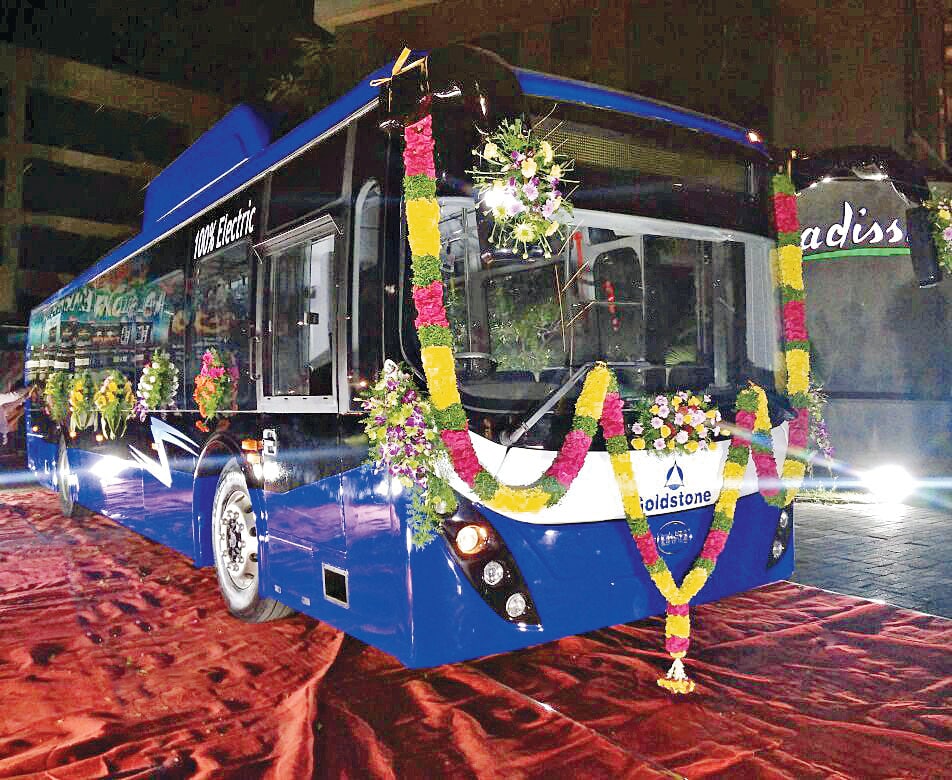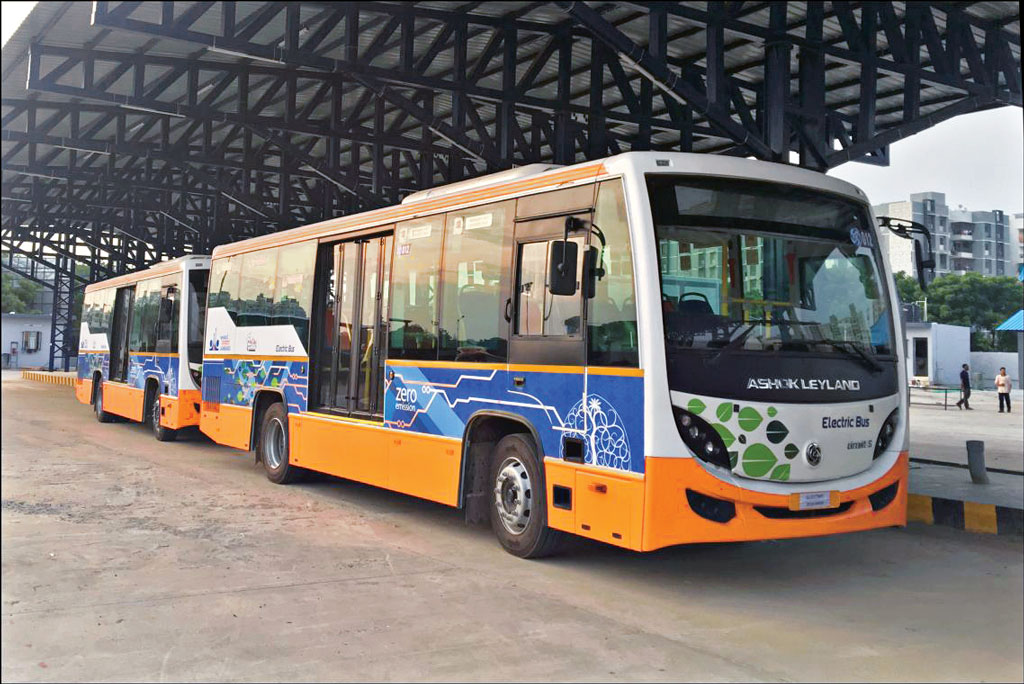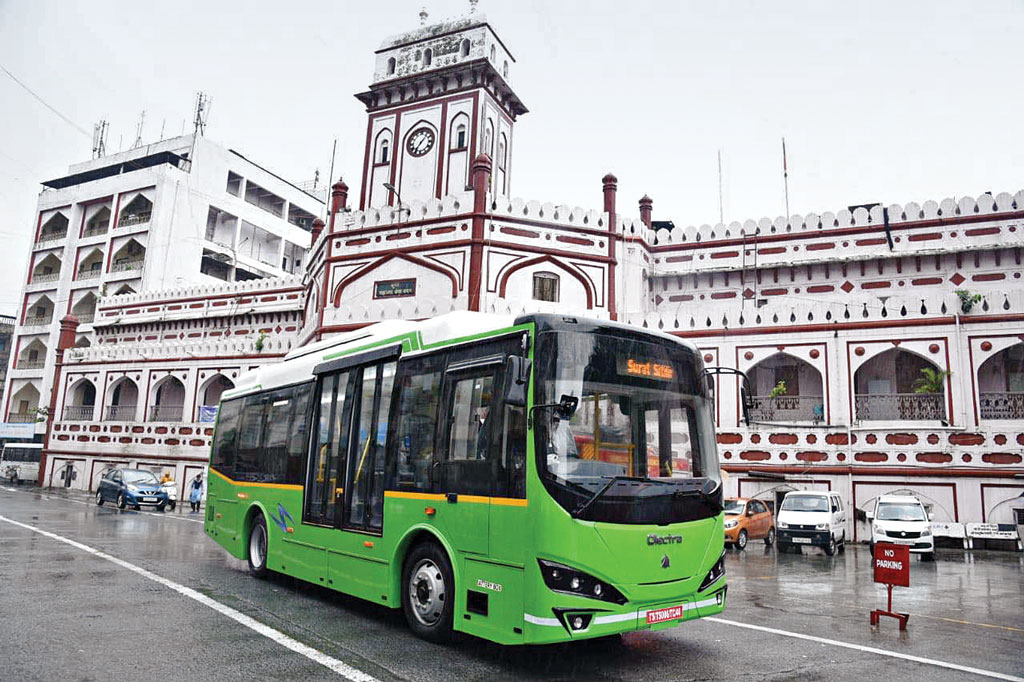The crucial changes prompted by the Government to the FAME II scheme involving electric vehicles are claimed to be on the back of its failure to achieve the desired results. Following the FAME I scheme that was rolled out in 2015 to encourage early adoption of electric vehicles and bring down the country’s dependence on crude oil, much of which is imported, the FAME II scheme was introduced in April 2019 with a total outlay of Rs 10,000 crore rupees for three years. While the FAME I scheme offered up to Rs.1.38 lakh incentives for electric and hybrid vehicles with an initial outlay of Rs 75 crore from the plan fund, the FAME II scheme offered an outlay of Rs.10,000 crore for a period of three years. Out of total budgetary support, about 86 percent of funds were allocated for demand incentives to create demand for EVs in the country. The phase aimed to generate demand by way of supporting 7000 e-buses, five-lakh e-three wheelers, 55000 e-four wheel passenger cars (including strong hybrid), and 10 lakh e-two wheelers. It was taken into consideration that depending upon the off-take of different categories of EVs, these numbers would vary. A provision was thus made for inter as well as intra segment-wise fungibility.
With a clear focus on incentivizing high-speed electric vehicles, charging stations, and commercial electric vehicles among others, the tweaked FAME II scheme has introduced a demand incentive of Rs.15,000 per KWh for electric two-wheelers with an upper ceiling at 40 percent of the vehicle cost. This translates into a nearly double increase in the current subsidy. Hinting at the easing of the scheme’s strict criteria and several challenges that were difficult to adapt to for industry players, the revised FAME II scheme, as per the specifics, would mean incentives of up to Rs.45,000 for electric two-wheelers. Those electric two-wheelers comply with the criteria set out under the purview of the FAME II scheme! For electric three-wheelers, the tweaked FAME II notification explains that state-owned Energy Efficiency Services (EESL) will launch an aggregate demand for 300,000 vehicles across a variety of user segments. For electric buses, the revised scheme notification calls for targeting cities with over four million population. Such cities in India would include Ahmedabad, Bangalore, Chennai, Delhi, Hyderabad, Mumbai, etc. EESL aims to fuel aggregate demand for remaining e-buses on an OPEX basis as per the revised scheme norms.
Expressed Sudarshan Venu, Joint Managing Director, TVS Motor Company, that his company welcomes the government’s support to electric vehicles. He added that the improved incentives for electric vehicles will increase penetration and encourage further indigenous investments in future technology. Saurav Kumar, Founder, and CEO, Euler Motors, said that the decision to extend the FAME II scheme will be incremental to push electric vehicle adoption in the country. The relaxations and revisions in the scheme will ensure OEMs can continue to offer EVs at a subsidized cost and cultivate a larger market for them. Uday Narang, Chairman, Omega Seiki Mobility, averred that the step to subsidize electric three-wheelers, two-wheelers, passenger vehicles, and buses will provide the much-needed impetus in their faster adoption. It will help to build an EV ecosystem in India through local manufacturing. Said to be an outcome of the efforts of electric vehicle manufacturers to draw the attention of the government to appraise them of the ground reality and the challenges involved in the proliferation of electric vehicles in India as against the envisaged performance and targets, the tweaked FAME II scheme has rolled out at a time when petrol and diesel prices are at an all-time high.
With no signs of the central or state governments lowering taxes on petrol and diesel despite a significant fall in consumption levels throughout April and May 2021. The domestic consumption of diesel during May 2021 fell by 17.2 percent on a month-on-month basis to 1.99 million tonnes, according to data released by the Petroleum Planning and Analysis Cell. The consumption of petrol also fell by 16.6 percent during the month to 1.77 million tonnes. Expected to support 10,00,000 e-scooters, a good chunk of which would be used for last-mile e-commerce delivery of food and parcels, the FAME II policy over the course of three years after it was rolled out in 2019 achieved a little over half of its anticipated target, mentioned an industry expert. Following the electric vehicle developments closely, he said that in the three years since FAME II was rolled out, some 30,000 e-scooters were registered. Drawing attention to the classification of e-two wheelers as low-speed (with top speed under 25 kmph and not needing registration) and high-speed (with a speed limit over 25 kmph and requiring registration), he mentioned that there was always a need to widen the scheme’s scope. It is good that steps in that direction have been taken with the rolling out of a revised FAME II scheme. Anil Srivastava, Mission Director, National Mission on Transformative Mobility and Battery, NITI Aayog, is known to have said that FAME II policy should be relooked at as statistics show the current outcome is not very encouraging in terms of numbers.
With numerous state governments coming out with their own incentives on electric vehicles in addition to the center announcing the Production Linked Incentive (PLI) scheme for bolstering domestic manufacturing in key sectors, including the auto industry, the rollout of a tweaked FAME II policy should help accelerate the proliferation of electric vehicles in India, especially concerning those that support urban transportation and have the capability to contribute to urban emissions. The original FAME II scheme is known to so far support 15,829 electric three-wheelers in comparison to the target of five lakh units. Mentioned a source that only five percent or Rs.500 crore out of the allocated Rs.0,000 crore has been spent so far. In FY2019-20, the Indian electric vehicle industry registered a 20 percent uptick with the sale of 1.56 lakh units as compared to the sale of 1.3 lakh units in FY2018-19. As per the Society of Manufacturers of Electric Vehicles (SMEV), electric two-wheelers made up for almost 97 percent of total sales with 1.52 lakh units sold as compared to 1.26 lakh units sold in the previous year. The sale of electric buses grew from 400 in FY2018-19 to 600 in FY2019-20. Said Shyam Maller, former Executive Vice President – Sales and Marketing, VE Commercial Vehicles Ltd., the tally of electric vehicles till date (including 2020) has been dismal till date against the background of Rs.10,000 being set aside by the government in 2019 for a three year period.
Procurement of e-buses under FAME II
On the basis of the sanction of a total of 5,595 e-buses in Phase I of FAME II to urban and inter-city agencies as per a UITP-India report, good progress has been achieved. The Department of Heavy Industries (DHI), which administers the scheme, has conducted 3500 bus fleet worth of tendering. It has overseen the completion of the procurement process of about 2450 e-buses with subsidies. The contracting and deployment of these vehicles were taken up in late 2020 and early 2021. While the 2450 e-buses would find deployment in 13 states and 30 cities and include a majority of nine-meter-long midi-buses (they make up to 81 percent of the total count), some of the key STU beneficiaries include BEST, Janmarg Ahmedabad, and Uttar Pradesh. As per the report, the suppliers of e-buses include Foton-PMI, Electra-BYD, and Tata Motors respectively as the big three in terms of numbers.
For the nine-meter-long e-buses, the maximum rate per km in the approved L1 bid stands at Rs.79.8 and Rs.86 for 12 m long e-buses. The minimum rate per km stands at Rs.52.2 and Rs.48.5 respectively. With the TCO of e-buses higher by 50 percent when compared to IC engine buses, the adoption of e-buses in cities has not been a matter of choice due to the unavailability of the FAME II subsidy. If the transition to BSVI would have changed the equation, the UTIP-India reports that a challenge exists in terms of range. The nine-meter-long bus range is about 30 percent lower than 12 m long e-buses. The 12 m long e-buses at the other end, have infrastructure challenges in terms of vehicle length and maneuverability. Calling on the need to reduce TCO drastically, the report states the need to involve relevant stakeholders like contracting bus agencies, OEMs, operators, financing institutions, and DHI. Stating the need for improvement in critical areas of terms of procurement to reduce e-bus cost, the report highlights a need to encourage a higher number of bids per tender to potentially lead to reducing costs in line with the competition among the bidders. Apart from the type of bidders, the report highlights operating experience, timelines for bid submission and scope of consultation, contractual obligation, subsidy bank guarantee, amount and duration, depot development among cities.
Of the opinion that the recently tweaked policy is a huge shot in the arm for organized electric two-wheeler makers, and for electric three-wheelers where the FAME II policy envisages actions for aggregating demand (for 300,000 numbers) through EESL, Maller mentioned that it will be interesting to see how the procurement through the respective organization works out. He drew attention to EESL being mandated to aggregate demand (on an OPEX basis) for e-buses as well, and particularly for cities and towns with a population of upwards of four million people. Interestingly, in FY2019-20 the sale of electric cars de-grew to 3,400 as compared to the sale of 3,600 units in FY2018-19. In FY2019-20, 90,000 e-rickshaws were sold. With news of global electric vehicle manufacturers like Tesla zeroing on land for building a facility and hiring senior executives in India grabbing headlines, the electric vehicle scene seems to be up for a drastic change.


























